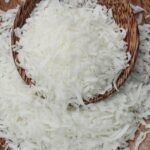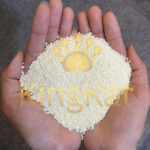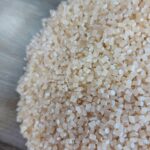CASHEW NUT SHELL OIL
Fish balls, a popular delicacy in many Asian cuisines, are beloved for their unique texture and flavor. However, the production of fish balls involves more than just fish meat; it requires precise ingredients that enhance texture, binding, and shelf life. One such ingredient that has gained significant attention in recent years is modified tapioca starch. This versatile component offers a range of benefits that are indispensable in the modern fish ball manufacturing process. In this blog, we will explore five key applications of modified tapioca starch in the production of fish balls.

Table of Contents
Toggle1. Enhancing Texture and Firmness
Modified tapioca starch plays a crucial role in improving the texture and firmness of fish balls. Traditional fish balls rely on the natural binding properties of fish meat and minimal additives. However, to achieve a consistently firm and bouncy texture, modified tapioca starch is added to the mixture. This starch is known for its superior gel formation and water-holding capacity, which ensures that fish balls maintain their desired texture during cooking and consumption. By incorporating modified tapioca starch, manufacturers can produce fish balls that have a more appealing and consistent mouthfeel.
2. Improving Water Retention
One of the challenges in fish ball production is retaining moisture during cooking and storage. Modified tapioca starch helps in retaining water within the fish balls, preventing them from drying out. This is particularly important for frozen fish balls, as moisture loss can lead to an undesirable texture and reduced shelf life. The water-retention properties of modified tapioca starch ensure that fish balls remain juicy and tender, even after being frozen and reheated. This benefit not only improves the product quality but also enhances consumer satisfaction.
3. Enhancing Binding Properties
Fish balls require a strong binding agent to hold the ingredients together. Modified tapioca starch is an excellent binding agent that helps in maintaining the structural integrity of fish balls. Its adhesive properties ensure that the fish meat, along with other ingredients such as seasonings and fillers, are uniformly mixed and held together during the cooking process. This results in fish balls that do not fall apart easily, providing a better cooking and eating experience. The improved binding capacity of modified tapioca starch also allows for the incorporation of additional ingredients, such as vegetables or other proteins, without compromising the product’s integrity.
4. Extending Shelf Life
The shelf life of fish balls is a critical factor for both manufacturers and consumers. Modified tapioca starch contributes to extending the shelf life of fish balls by acting as a stabilizer. It prevents the separation of water and fat, which can lead to spoilage and off-flavors. Additionally, modified tapioca starch can reduce the growth of microbes by lowering the water activity in the product. This not only ensures that the fish balls remain safe to consume for a longer period but also maintains their quality and taste over time. For manufacturers, this means reduced waste and increased profitability.
5. Cost-Effective Solution
From a commercial perspective, modified tapioca starch offers a cost-effective solution in fish ball production. It is relatively inexpensive compared to other hydrocolloids and binding agents, making it an economical choice for manufacturers. The use of modified tapioca starch can reduce the overall production costs without compromising the quality of the final product. Its versatility and efficiency in enhancing texture, binding, and shelf life make it an attractive ingredient for large-scale fish ball production. Furthermore, as consumer demand for high-quality, affordable food products continues to rise, the cost-effectiveness of modified tapioca starch ensures that manufacturers can meet this demand competitively.

Conclusion
In summary, modified tapioca starch is an indispensable ingredient in the production of fish balls. Its ability to enhance texture, improve water retention, strengthen binding properties, extend shelf life, and offer a cost-effective solution makes it a valuable addition to any fish ball recipe. As the demand for high-quality fish balls grows, the application of modified tapioca starch will continue to play a pivotal role in meeting consumer expectations and driving innovation in the food industry. For manufacturers looking to produce superior fish balls, incorporating modified tapioca starch is not just an option; it is a necessity.
By understanding and utilizing the benefits of modified tapioca starch, fish ball producers can ensure their products stand out in the competitive market, offering consumers the taste and texture they love.
If you are looking for solutions to enhance the quality of your products, please contact Abimex Group. We are committed to providing high-quality modified tapioca starch and customized solutions to meet your production needs.












